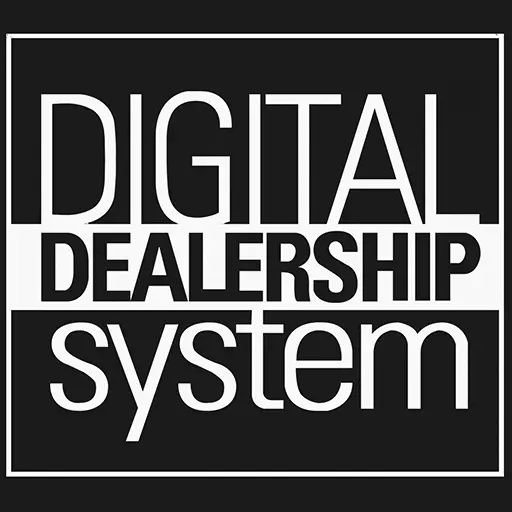Want to help your service advisors do better and keep an eye on important numbers? In this blog, I’ll help you make your service advisors do better using digital tools.
Technology, training, and other stuff can help your service advisors do a great job. Keep reading to find out how to check and understand their work and make your dealership more successful.
Table of Contents
ToggleKey Takeaways
- Optimizing service advisor performance is essential for any dealership’s success. Focusing on key performance indicators (KPIs) and using technology can help enhance the customer experience and boost service department profits.
- Offering training and development opportunities for service advisors is also essential. Implementing effective CRM strategies can further improve efficiency and effectiveness.
- Measuring and analyzing performance results allows dealerships to make wise decisions. By utilizing these strategies, dealerships can witness improvements in their overall performance. So, get started today and watch your dealership soar!
If you want to discover more about Fixed Ops Leaderboard, visit the Digital Dealership System website.
Importance of Optimizing Service Advisor Performance

Making service advisors do better is super important to make customers happy and boost the dealership’s profits. As a service advisor, your job is crucial in making sure customers have a great experience.
To be a top-notch service advisor, you need to provide fantastic customer service. That means being polite, helpful, and knowing your stuff when talking to customers. Building a friendly relationship and really listening to their concerns can help you understand what they need and leave a good impression.
Another part of being a great service advisor is managing the service process really well. That means figuring out what’s wrong with the car, giving accurate estimates and timelines, and making sure the repairs or maintenance happen smoothly. When you do these things right, it cuts down on how long customers have to wait and makes their service experience awesome.
When you perform at your best, customers are happier; they come back more often, and that’s a win for the dealership.
Key Performance Indicators (KPIs) for Service Advisors

Boosting Service Advisor Success: The Power of Tracking Performance Metrics
In the world of car dealerships, making service advisors even better at their job means keeping a close eye on how they’re doing.
Here’s the deal: By keeping track of specific Key Performance Indicators (KPIs), dealerships can learn a lot about how well their service advisors are doing and figure out where they can get even better.
These KPIs are like special tools that let dealerships see the numbers behind an advisor’s performance. It’s not just about making customers happy; it’s also about making sure the dealership is making money.
| KPI | Description | Target |
| Customer Retention | Percentage of customers who return for service within a specified time | 85% |
| Average Repair Order | Average amount spent by each customer per visit | $300 |
| Customer Satisfaction | Measurement of customer satisfaction with the service experience | 90% |
This table breaks down the key performance indicators (KPIs) for service advisors, making it simple to grasp the important metrics used to evaluate their performance.
By monitoring these KPIs, dealerships can assess the effectiveness of their service advisors in terms of customer retention, revenue generation, and customer satisfaction. These metrics provide a clear picture of an advisor’s performance and point out areas that may need improvement.
Using technology to optimize performance, such as digital tools and software, can help service advisors track and analyze their KPIs more effectively.
The right technology can help advisors spot patterns, determine areas needing improvement, and ultimately enhance their performance and the overall success of the dealership.
Utilizing Technology for Performance Optimization

A customer relationship management (CRM) system is key for advisors to keep track of customer interactions, manage appointments, and access customer data. Having this information easily available allows advisors to customize their interactions with customers, provide what they need, and deliver a smooth service.
Digital inspection tools are also useful for advisors. These tools enable advisors to conduct thorough vehicle inspections, capture pictures or videos of any problems, and quickly share them with customers. This not only ensures transparency but also strengthens the bond between the advisor and the customer.
By embracing technology and making it part of their operations, service advisors can optimize their performance and exceed customer expectations. Training and development for service advisors is necessary for combining technology with the right skill set and elevating performance.
Training and Development for Service Advisors

These programs focus on technical knowledge, such as vehicle diagnostics and repairs, and also on soft skills, including communication and problem-solving. Investing in training and development helps advisors become more confident and capable in their interactions with customers, which leads to better customer satisfaction and loyalty.
Training programs typically include classroom instruction, hands-on practice, and shadowing experienced advisors. This allows new advisors to learn from experienced professionals and gain real-world experience in a supportive environment.
Training programs also emphasize the importance of customer relationship management (CRM) strategies. Advisors learn how to create and maintain strong relationships with customers, making sure their needs are met. This includes communication, listening, and personalized service.
By taking part in these training and development programs, you will be well-equipped to excel as a service advisor. To access additional information about the Fixed Ops Leaderboard, explore the Digital Dealership System website.
Customer Relationship Management (CRM) Strategies

To create and maintain strong customer relationships, it’s essential to use customer data for tailored service. Knowing customers’ preferences, behaviors, and needs can help you personalize and make your interactions more meaningful.
This can result in higher customer loyalty and satisfaction, which ultimately drives business growth.
Building and Maintaining Strong Customer Relationships
Creating and keeping up strong customer relationships is critical for service advisors to be successful in their roles and provide a pleasant and relatable experience for their clients.
To reach this goal, advisors should concentrate on the following:
- Effective Communication.
- Listen carefully to customers and answer their concerns promptly.
- Explain service recommendations and respond to any queries.
- Establishing Trust.
- Be open about pricing, timelines, and service procedures.
- Follow through on pledges and meet expectations.
By emphasizing effective communication and trust, service advisors can create long-term relationships with their customers. These connections are necessary for customer retention and commitment, which ultimately contribute to the success of the service department.
Utilizing customer data for personalized service further elevates these connections, allowing advisors to foresee customer needs and supply tailored solutions without explicitly stating the next step.
Leveraging Customer Data for Personalized Service
Leveraging customer data provides insight into their choices, buying habits, and even vehicle history. This data enables predicting customer needs, recommending relevant services, and offering tailored promotions. For instance, if you know that an oil change is due for a customer’s car, you can take the initiative to set an appointment.
Examining customer data can also help recognize trends and patterns, which can be utilized to enhance overall service offerings. With this knowledge, your service advisors can be equipped with the right information to offer a top-notch customer experience.
Measuring and assessing performance results allows tracking the usefulness of these personalized strategies.
Measuring and Analyzing Performance Results

Measuring and analyzing performance results is essential for optimizing service advisor performance and KPI tracking, allowing for a deeper comprehension of areas for growth.
By closely monitoring and assessing performance, you can identify both strong points and weaknesses in your service advisor’s performance, allowing you to make data-driven decisions to improve customer satisfaction and boost profitability.
Here are three effective ways to measure and analyze performance results:
- Establish clear performance metrics: Set specific and quantifiable goals for your service advisors, such as customer satisfaction ratings, average repair order value, and service retention rates. These metrics will serve as standards to track progress and detect areas that need improvement.
- Implement comprehensive reporting tools: Invest in software or tools that provide detailed reports on key performance indicators. These tools can help you examine data, detect trends, and pinpoint areas where your service advisors do well or struggle.
- Frequently review and talk about results: Schedule regular meetings with your service advisors to review performance results. Utilize these chances to give feedback, discuss tactics for improvement, and celebrate successes. Open communication and collaboration can cultivate a culture of continuous improvement.
Remember, measuring and analyzing performance results is not a one-time task but a continuous process. By consistently evaluating performance, you can discover opportunities for growth and drive success in your fixed ops department.
Conclusion – Digital Fixed Ops Leaderboard
Optimizing service advisor performance is essential for any dealership’s success. Focusing on key performance indicators and utilizing technology can help enhance the customer experience and increase service department profits.
Offering training and development opportunities for service advisors is also crucial. Implementing efficient CRM strategies can further boost efficiency and effectiveness.
Measurement and analysis of performance results allow dealerships to make educated decisions. By implementing these strategies, dealerships can see improvements in their overall performance. So, start utilizing these strategies now and watch your dealership succeed!
If you’re interested in gaining further insights about Fixed Ops Leaderboard, make sure to explore the Digital Dealership System website.
Frequently Asked Questions
What are some common challenges faced by service advisors in optimizing their performance?
Managing multiple tasks and priorities, dealing with demanding customers and their expectations, effectively communicating and upselling services, and handling difficult or irate customers can be some of the challenges service advisors face when trying to optimize their performance.
Keeping up with new technologies and industry trends, meeting sales and revenue goals, and making sure customer satisfaction is maintained can also be difficult.
It is essential to come up with strategies and techniques to overcome these difficulties and excel in the role.
How can service advisors utilize technology to improve their performance?
To boost your performance as a service advisor, technology can make a huge difference. Leverage tools such as customer relationship management software to keep track of customer interactions, appointments, and follow-ups.
Implement digital inspection software to simplify the vehicle check-in process and give customers comprehensive reports.
Implement online scheduling systems to make it simpler for customers to book appointments.
Adopting technology will increase your productivity, customer satisfaction, and overall performance.
What are some effective training and development strategies for service advisors?
Onboarding new service advisors is an effective strategy to ensure they understand company policies and procedures. Offering ongoing training sessions helps them stay up to date on industry trends and new technologies. Encouraging them to attend workshops and conferences can broaden their knowledge and create networking opportunities.
Implementing a mentorship program with experienced advisors can help guide and support new hires. Performance should be regularly evaluated, and feedback provided to foster continuous improvement.
What are some CRM strategies that can help service advisors in their performance?
Effective CRM strategies should be used to enhance service advisor performance. Utilize customer relationship management software to monitor customer interactions and view their preferences. This will allow you to tailor your approach and provide an outstanding service.
Rely on CRM tools to automate follow-up processes, making sure no customer is forgotten. By making use of CRM, service advisors can streamline their workflow, improve customer satisfaction, and, in turn, boost their performance.
What are some best practices for measuring and analyzing service advisor performance results?
To measure and analyze service advisor performance results effectively, you should begin by establishing clear, specific KPIs that are in line with your business objectives.
Track and monitor these KPIs on a regular basis to recognize trends and areas that need improvement.
Utilize digital tools and software to facilitate data gathering and analysis.
Provide timely feedback and training to service advisors based on their performance results.
Congratulate accomplishments and honor top performers to spur motivation and involvement.

Zach White is a leading writer in digital signage, known for making complex technology both clear and compelling. With a background in Communication Technology and a passion for visual communication, he specializes in breaking down the latest trends in digital sign systems for industry professionals and enthusiasts alike. As a writer for a top digital signage company, Zach blends technical insight with creative vision to highlight how these systems transform public spaces and communication.
A regular speaker at industry events, he stays at the cutting edge of innovation—keeping his readers informed and inspired.






